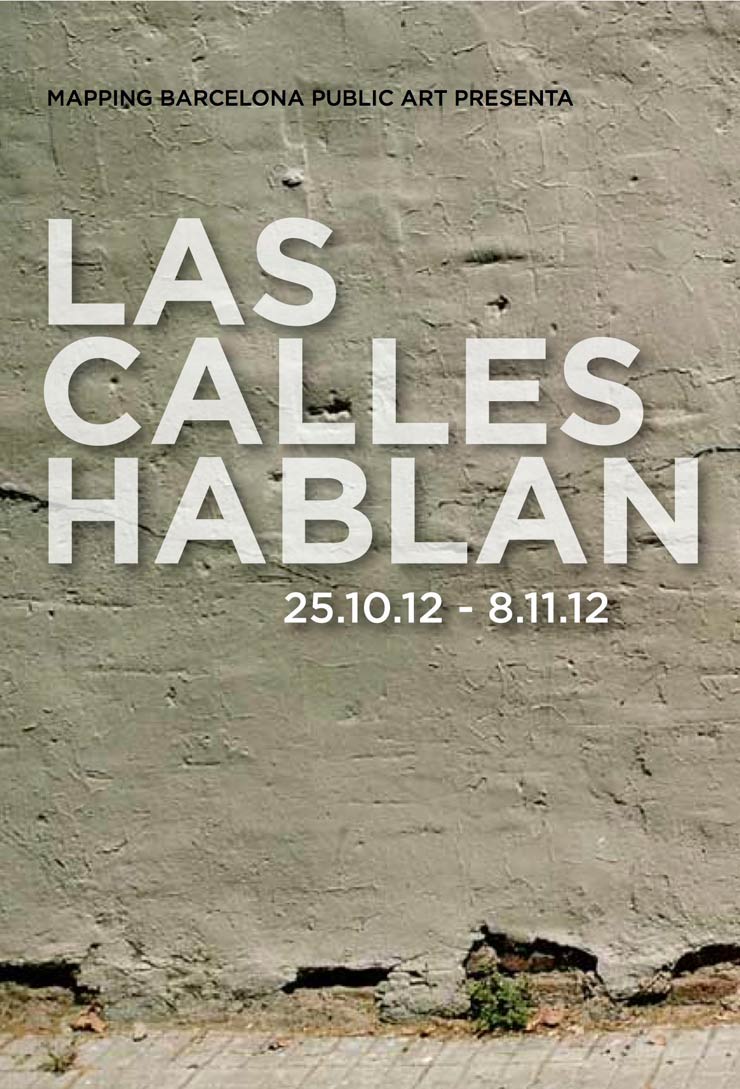Las Calles Hablan, the first exhibit by Mapping Barcelona Public Art, is about the evolution of street art in Barcelona. The opinions on graffiti go in many different directions – love, hate, indifference. This exhibit welcomes all opinions, inviting everyone to see and learn more about their community and how graffiti can be a compelling element for a visual discussion. Barcelona, like many cosmopolitan cities, has a rhythm, a natural beat that carries and communicates its personality: the very soul of the place. It carries the mood but also embraces the history in the streets. This vibrant energy has attracted many graffiti artists from around the world to live and work, documenting the life and soul of the city on its walls. here because of this energy.
After the death of Franco in the 1970s, Barcelona evolved into a bohemian, cultural city creating a place and environment where the people could reclaim their space, their culture and language. Over the next decades, the city flourished with street art freedom: graffiti along the city walls, music in every corner. During this urban cultural renaissance, artists created a public gallery where the people could enjoy a city which is flourishing with artistic expression. The street art of this time often provoked playful interchanges or posed political, economic or cultural questions. There was a public conversation between the artists and the people in the streets.
Other cities, like Rio de Janeiro and Buenos Aires, developed and embraced their rich street art scenes to the extent where this urban art has become a part of their cultural identities. However, recent changes to the local laws in Barcelona have tightened restrictions on street art, increasing fines and limiting the spaces where street art can be shared with the people. Las Calles Hablan aims to open up the dialogue in the community about the value of street art by providing information on the various barrios and their history since the fall of Franco, a history of the graffiti scene in Barcelona during that same time period, and sharing photographs of work from various local graffiti artists along a timeline. We encourage and invite an open discussion about the graffiti scene.
Documentary
For the opening, there will be a never before seen documentary film, with footage of incredible graffiti areas in Barcelona, as well as interviews with artists, a street art gallery owner and others in the know. Justin Donlon and Sylvia Vidal are producing this fresh inspirational and educational view of the streets of Barcelona.
Other Articles You May Like from BSA:
“They both see words as images,” says Shoe about graffiti writers and Medieval scribes in a 2013 interview with the BBC. His latest tome extrapolates this reverence for the letterform, an obsessive re...
Welcome to BSA Images of the Week. Happy Hannukah to all our Jewish friends this week as the festival of lights began on Thursday night. “Chag Sameach!” Meanwhile, the Christmas jam is in f...
Summer’s final roses are still ripe for the picking here in Brooklyn, with no threat of autumn’s frost in sight and late September sun to illuminate them as you scuffle by on concrete sidewalks. Stree...
Something resembling the truth, as painter Jasper Johns may say, is what we hear and see from the storm of disinformation we’re now in. Somewhere we know there is a dissembling of the economic and so...
Happy Holidays! We’re celebrating the end of one year and the beginning of the next by thanking BSA readers, friends, and family for all of your support in 2022. We have selected some of our favo...
 BROOKLYN STREET ART LOVES YOU MORE EVERY DAY
BROOKLYN STREET ART LOVES YOU MORE EVERY DAY










